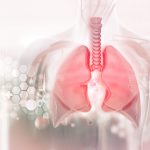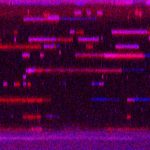To verify that the 528-year-old bones buried under a parking lot in Leicester, England, belonged to Richard III, archeologists decided to “follow the mommy”: the mitochondrial DNA (mtDNA) the king’s mother passed along to her children and through the maternal line that descended from his sister.
The DNA in the mitochondria, the so-called powerhouse of the cell, is uniquely handed down from mother to child, with no paternal influence, and is stable over many generations. University of Leicester researchers explored the family tree of Richard III, following the branches from his sister, Anne of York, directly to her great-times-15 grandson, Canadian carpenter Michael Ibsen. The team compared Ibsen’s mtDNA to a sample from the remains found under the parking lot and announced Monday they had scientifically confirmed what they strongly suspected: the bones belonged to the last Plantagenet king.
Like the DNA of the nucleus, certain changes in mtDNA can play a role in disease. Researchers at the University of Pittsburgh School ofMedicine are among the many groups who have been examining mitochondria not for insights into the past, but to unravel the mysteries of present-day illness.
Bennett Van Houten, Ph.D., Richard M. Cyert Professor of Molecular Oncology at the University of Pittsburgh Cancer Institute, led a team that on Monday published in the Journal of Cell Science research that showed knocking out a protein called dynamin-related protein 1 (Drp1) stalled the process of fission, in which a mitochondrion splits itself into two new mitochondria. The inability to reproduce stopped breast and lung cancer cells from growing. Van Houten’s team also found a compound that could cause cancer cells to behave much as they do when they lack Drp1, and are now continuing their studies of it in the laboratory.
“About 3 billion base pairs, or building blocks, make up the DNA of the nucleus, and about 16,500 base pairs in the mitochondria,” Van Houten said. “So there’s very little mitochondrial DNA, but it can pack a wallop if it’s mutated.”
At the mitochondrial disease clinic in the Division of Medical Genetics at Children’s Hospital of Pittsburgh of UPMC, Jerry Vockley, M.D., Ph.D., Amy Goldstein, M.D., and their colleagues diagnose and treat children who have mutations of mtDNA or nuclear DNA that play a role in mitochondrial function, which can cause developmental delays, seizures, hearing and vision loss, heart problems, gastrointestinal symptoms, diabetes, and other conditions.
“Mitochondrial disease is highly variable,” Vockley said. “Because there are mitochondria in nearly every cell in the body, any tissue can be affected. It can be severe or mild, produce symptoms at birth or not manifest until adulthood. Typically we are asked to assess young children who have developmental delays and muscle weakness who have had non-specific symptoms for years.”
Only 13 of the 3,000 proteins that are needed for mitochondria, which are the batteries of the cell, to function properly are made by mtDNA, he noted. The production of the rest is controlled by the DNA of the nucleus. About 5 percent of all mitochondrial diseases are caused by a mtDNA mutation, and the remainder by errors in the nuclear DNA.
According to the Pittsburgh-based United Mitochondrial Disease Foundation, every 30 minutes a child is born who will develop a mitochondrial disease by age 10, and annually 1,000 to 4,000 children in the United States are born with a mitochondrial disease.









